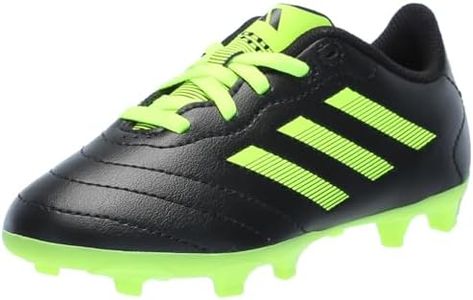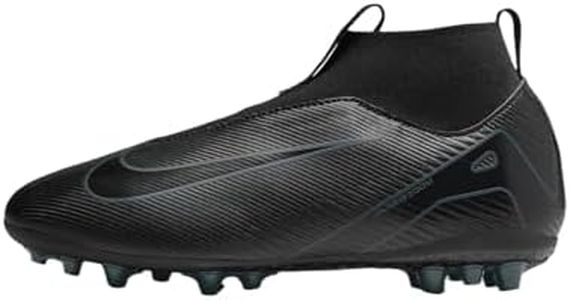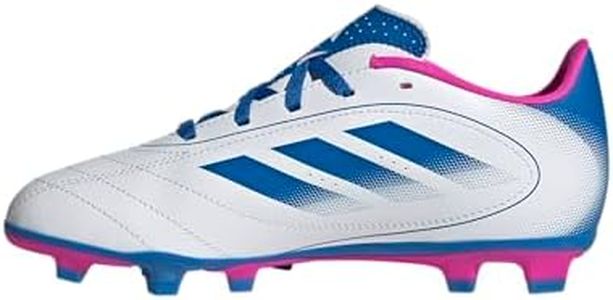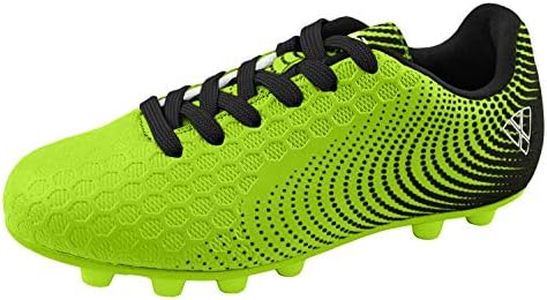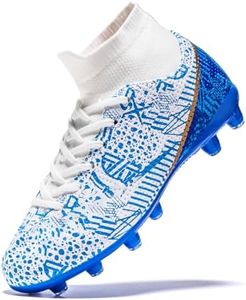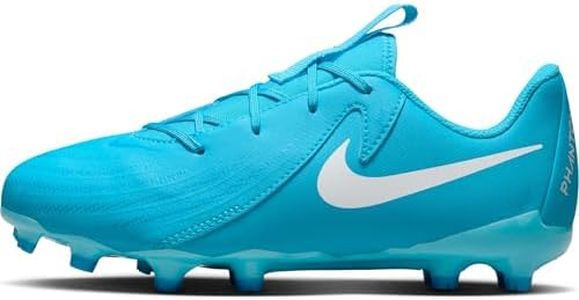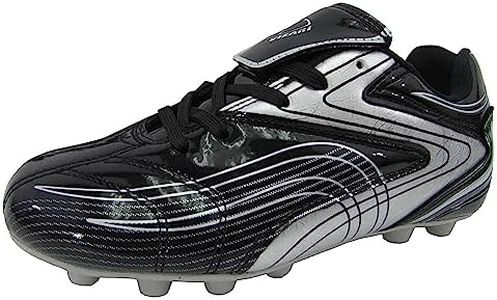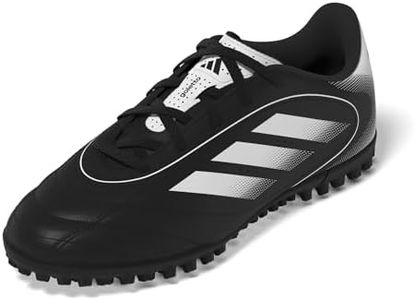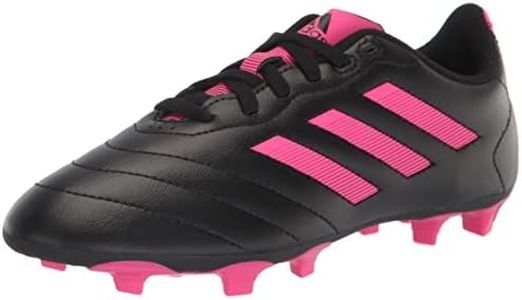We Use CookiesWe use cookies to enhance the security, performance,
functionality and for analytical and promotional activities. By continuing to browse this site you
are agreeing to our privacy policy
10 Best Kids Soccer Cleats
From leading brands and best sellers available on the web.Buying Guide for the Best Kids Soccer Cleats
Picking the right kids' soccer cleats is more important than many parents first realize—proper footwear can help a young player perform better, reduce risk of injury, and have more fun. When shopping for soccer cleats for kids, focus on their comfort, fit, playing surface, and level of play. Kids’ feet grow quickly, so aim for cleats that have a bit of room to grow but still fit snugly enough for control and safety. Understanding key features will help you choose the right cleats for your child's needs.Fit and ComfortFit and comfort refer to how well the cleat shapes to your child’s foot and how comfortable it feels when they walk or run. This is a crucial aspect because ill-fitting shoes can cause blisters, pain, or even injuries. Cleats that are too tight may cut off circulation, while loose cleats can affect their control and increase the chance of tripping. When selecting, check if there’s a thumb’s width between the big toe and the end of the shoe, and make sure your child wears the right socks during the try-on. If your kid is between sizes, go up a half-size but avoid very loose shoes. Remember, a good fit should feel snug but not restrictive.
Playing Surface CompatibilityPlaying surface compatibility means making sure the cleats’ sole matches the types of fields where your child will play. Soccer cleats come with different types of studs designed for firm ground (natural grass), soft ground (wet/muddy fields), artificial grass, or indoor surfaces. Firm-ground cleats with molded plastic studs are the most common for outdoor play, while turf-specific or indoor shoes with tiny studs or flat soles are best for artificial or indoor surfaces. Think about where most of your child’s games and practices will be held—choosing compatible cleats helps with grip, stability, and comfort on the field.
MaterialThe material of the cleat affects its weight, durability, comfort, and breathability. Most kids’ soccer cleats come in synthetic or leather uppers. Synthetic materials are often lighter and easier to clean, making them popular for younger players, while leather can provide a softer fit and more natural ball feel but may require more care. For beginners or recreational play, synthetic is usually suitable; for more serious players, leather may offer better performance and comfort, but always weigh the maintenance needs.
Closure TypeClosure type refers to how the cleats fasten on the foot—mainly laces or Velcro straps. Laces allow for a customizable fit and are more secure, but younger children who can’t tie laces might find Velcro closures easier. Velcro is great for toddlers or early elementary-aged kids, as it helps them be more independent. For older kids who play more competitively, laced cleats offer better fit and support, which is important on the field.
WeightThe weight of the cleat can make a difference in how quick and agile a child feels while playing. Lighter cleats are generally easier for kids to move in and can help with speed, but very lightweight options sometimes offer less support. Heavier cleats may provide more durability and stability, which can be helpful for beginners. For most kids, a medium weight offers a good mix of protection and performance—pick based on your child’s position, style of play, and preference.
Ankle SupportAnkle support is influenced by the height of the cleat’s collar—low-cut, mid-cut, or high-cut. Low-cut cleats offer more freedom of movement but less ankle protection, while mid- and high-cut designs provide added stability around the ankle, which can be reassuring for young or beginner players. For most youth games, low-cut or mid-cut options work well. If your child has a history of ankle issues, you may want to consider cleats with more support.



